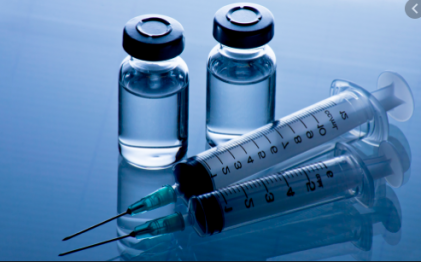Like drug pharmacovigilance, vaccine pharmacovigilance aims to detect adverse events early to trigger accurate risk assessment and appropriate response (risk-management) to the problem. This ensures the minimization of negative effects to individuals. Another goal of vaccine pharmacovigilance is to lessen the potential negative impact on immunization programmes.
Vaccines, like other pharmaceutical products, undergo extensive testing and review for safety, immunogenicity, and efficacy in the laboratory, in animals, and in three phases of clinical trials in human subjects before marketing. Monitoring adverse vaccine reactions is a major safety component of pre-marketing clinical trials.
Why post marketing vaccine vigilance is important?
- Post-marketing surveillance of vaccine safety is critical. The conditions and reasons for safety monitoring change following licensure and introduction of a new vaccine.
- Vaccines are now in use in the general population and recipients are no longer monitored in clinical trial with narrow inclusion/exclusion criteria.
- Subpopulations commonly excluded in clinical trials (e.g. those with underlying medical conditions, preterm infants) get vaccinated.
- Large numbers of people are being vaccinated, for example, entire birth cohorts receive infant vaccines.
- Other factors that can lead to AEFIs, such as incorrect administration practices, need to be monitored for safety.
- Uncommon and rare vaccine reactions, and reactions with delayed onset, may not be detected before vaccines are marketed.
- The age at the time of immunization may coincide with the emergence of certain age- related diseases (e.g. neuro-developmental disorders)
- Immunization with certain vaccines is mandated in some countries
- The benefits of immunization may not be immediately visible, particularly if the target disease incidence is low
- Due to the low acceptance of risks, intensive investigation of serious AEFIs, even if rare, is necessary
- Non-serious AEFIs may signal a potentially larger problem with the vaccine or immunization, or have an impact on the acceptability of immunization in general
- Health providers should understand that some commonly used vaccines have demonstrated rare and potentially serious adverse events. In these instances, policy-making bodies have judged that the individual and community benefits of vaccination outweigh the risks.
AEFI surveillance (also known as vaccine safety surveillance)
- A surveillance system designed to collect adverse events temporally associated with receipt of vaccines. This type of surveillance typically relies on health professionals associating an adverse event in an individual as a possible consequence of vaccination and reporting it to the NRA or appropriate authority.
- These systems are specific to monitoring adverse events associated with vaccine use. In contrast, adverse drug reaction (ADR) surveillance systems are used to monitor suspected adverse reactions associated with medicines.
- A range of surveillance options can be used to monitor the safety of vaccines and immunizations post-marketing.
Passive surveillance systems
- Passive surveillance (also known as spontaneous reporting): A surveillance system designed to collect adverse events that follow vaccination. This type of surveillance typically relies on health professionals noticing and reporting adverse events in individuals after vaccination to the NRA or appropriate authority.
- These systems (or spontaneous reporting systems) are the cornerstone of most post-marketing safety monitoring systems because of their relative ease of implementation, their cost and ability to capture unexpected events.
- These reporting systems monitor events reported by health care providers and consumers and do not actively seek out and collect data or measure outcomes using study protocols.
Active surveillance systems
Post-marketing clinical trials and phase IV surveillance studies
- Vaccines may undergo clinical trials after marketing to assess the effects of changes in vaccine formulation, vaccine strain (A specific genetic grouping of an organism. Many organisms, such as viral influenza, pneumococcus and meningococcus, have multiple strains that cause disease), age at vaccination, number and timing of vaccine doses, simultaneous administration and interchangeability of vaccines from different manufacturers on vaccine safety and immunogenicity.
- To improve the ability to detect adverse events that are not detected during pre-marketing trials, some recently licensed vaccines in developed countries have undergone formal phase IV surveillance studies, involving cohorts as large as 100000 often recruited from health maintenance organizations (HMOs), lasting four to six years.
Large linked databases (LLDBs)
- LLDBs are large administrative databases from defined populations (such as a single health care provider or HMO) that were created separately from each other and linked to enable the sharing of data across platforms. Such linked databases have become useful to vaccine safety surveillance.
- Because LLDBs cover enrolee populations numbering from thousands to millions, they can detect very rare adverse events. With denominator data on doses administered and the ready availability of appropriate comparison (i.e. unvaccinated) groups, these large databases provide an economical and rapid means of conducting post-licensure studies of the safety of drugs and vaccines. They also represent powerful tools to allow for testing hypotheses when signals or allegations create suspicions of a possible vaccine safety issue.
- The Vaccine Safety Datalink (VSD) project is an example of a LLDB between the USA’s Centers for Disease Control and Prevention (CDC) and eight HMOs. The VSD project was established in 1990 to monitor immunization safety and to address the gaps in scientific knowledge about rare and serious events following immunization.
Clinical centers, including the Clinical Immunization Safety Assessment (CISA) centers
- More recently, tertiary clinical centers have been used to conduct research on immunization-associated health risks.
- The USA’s Clinical Immunization Safety Assessment (CISA) Network is a national network of six medical research centers with expertise in immunization safety conducting clinical research on immunization-associated health risks. CISA conducts clinical research on vaccine adverse events and the role of individual variation.

Leave a Reply